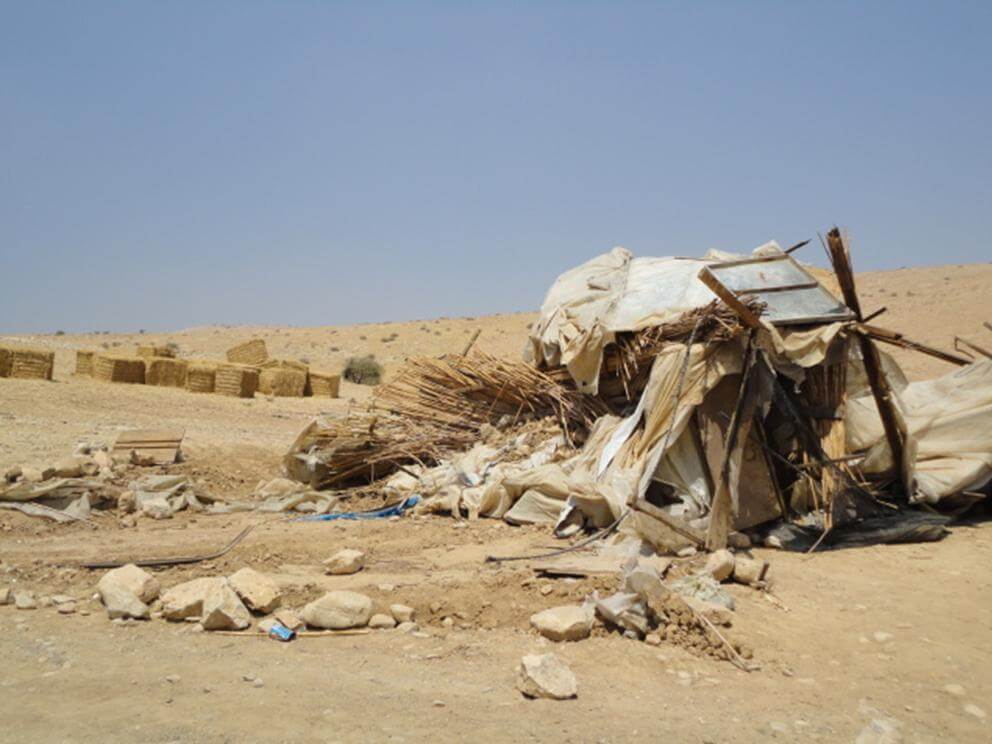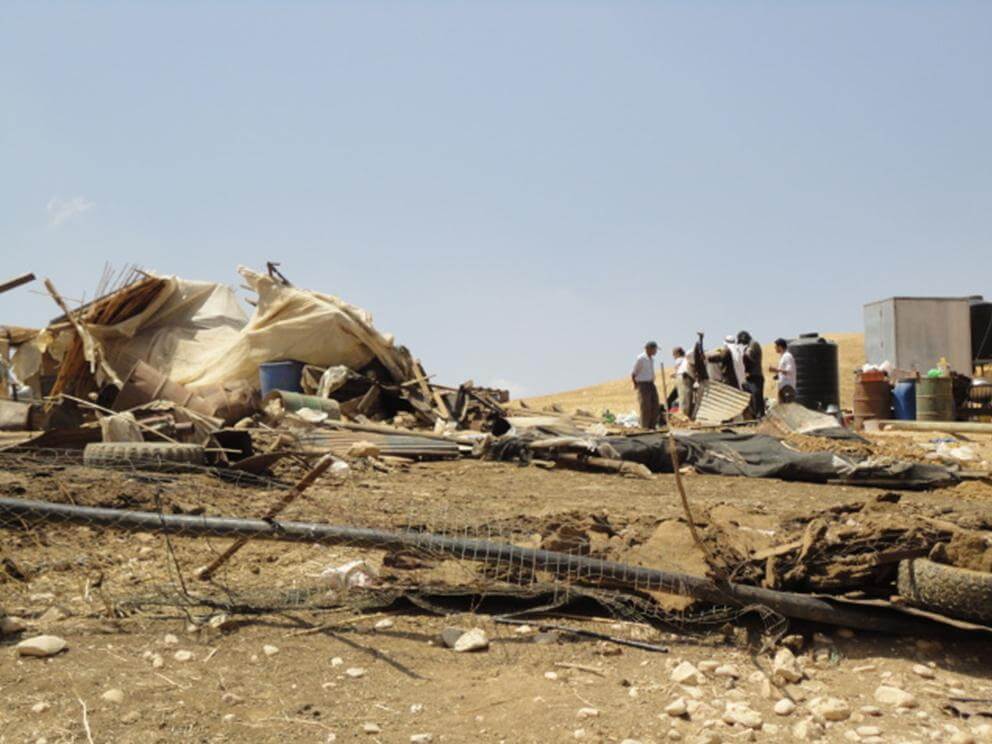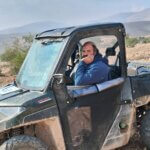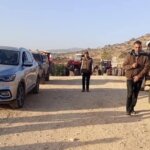House Demolitions Jordan Valley – Khirbet Humsa
 This morning at 6am 9 army jeeps and a bulldozer demolished 5 structures in Khirbet Humsa, in the Palestinian Jordan Valley. The village is located in area C, the area temporarily under full Israeli military control since the Oslo accords. The demolition is one in a large row of demolitions in the area under Israeli occupation.
This morning at 6am 9 army jeeps and a bulldozer demolished 5 structures in Khirbet Humsa, in the Palestinian Jordan Valley. The village is located in area C, the area temporarily under full Israeli military control since the Oslo accords. The demolition is one in a large row of demolitions in the area under Israeli occupation.
“Since 1967, when it seized the West Bank from Jordan during hostilities—and under a variety of governments, since the right-wing Likud party first came to power in 1977—Israel has expropriated land from Palestinians for Jewish-Israeli settlements and their supporting infrastructure, denied Palestinians building permits and demolished “illegal” Palestinian construction (i.e., Palestinian construction that the Israeli government chose not to authorize), prevented Palestinian villages from upgrading or building homes, schools, health clinics, wells, and water cisterns, blocked Palestinians from accessing roads and agricultural lands, failed to provide electricity, sewage, water, and other utilities to Palestinian communities, and rejected their applications for such services[Human Rights Watch, 2010, ‘Seperate and Unequal’, see 1, p 3-4].”
 Early in the morning the army closed the area, there were no other witnesses than the family of Abu Najar. They demolished two tents, two houses and one old building built in the 1950s. The family was able to save some of their belongings out of the houses and tents, mainly food and household materials – though a lot of it will be ruined, as it has been laying in the sun during half a day. Nine members of the family are now without shelter or home.
Early in the morning the army closed the area, there were no other witnesses than the family of Abu Najar. They demolished two tents, two houses and one old building built in the 1950s. The family was able to save some of their belongings out of the houses and tents, mainly food and household materials – though a lot of it will be ruined, as it has been laying in the sun during half a day. Nine members of the family are now without shelter or home.
The family received an order to leave the area three weeks ago, but has no other place to go. When asked if they will stay Abu Najar repeated this, saying ‘Where should I go? And where can I go where the problems aren’t the same?’. It is the 4th time the army comes and destroys houses in Khirbet Humsa.
Although the village is located in a closed military zone in area C, where Israel is not permitting any renovation or construction of Palestinian structures, there is no single military need justifying the demolition [‘Fact Sheet: the Jordan Valley’, Save the Children UK, 2009, p 2]. In fact, Palestinian buildings built before 1980 are generally left alone. The family is in contact with a lawyer to try and fight the demolition of the 1950 house in court, ask for a compensation and a building permit to reconstruct it.
The same day, at 9am a house was demolished in Al Jiftlik, the seven members of the family of Mahmoud Kha’abne are left homeless.
During the day after the demolition the family of Abu Najar was visited by a team of UNDP and Jordan Valley Solidarity and had contact with the International Red Cross.






